Table of Contents
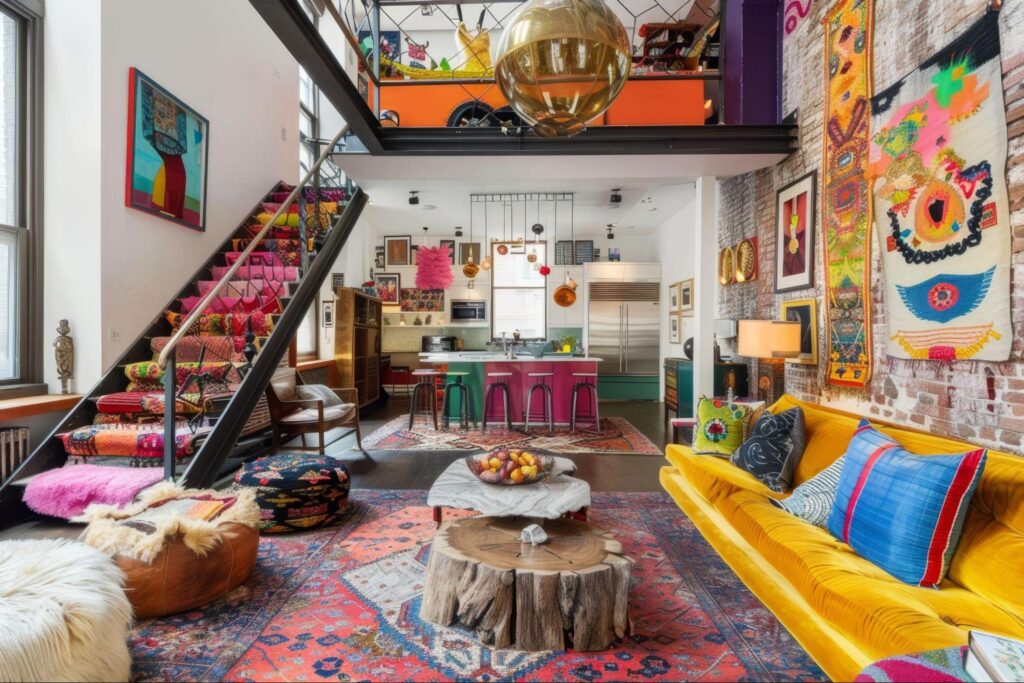
Maximalism has stormed back into interior design, challenging minimalism’s long reign with its celebration of color, pattern, and personality. But there’s a fine line between curated abundance and chaotic clutter. The most successful maximalist spaces feel intentional rather than overwhelming—thoughtfully layered rather than randomly accumulated. Here’s how to nail the ‘maximalist’ look without overdoing it. Embrace this expressive style while maintaining the crucial balance that makes it livable.
Start With a Consistent Color Story
The secret to maximalism that works? Underlying structure that creates harmony amid variety. Color offers the most accessible organizing principle, providing coherence even as patterns and textures multiply.
Choose a defined color palette of 3-5 hues that will appear consistently throughout your space. This doesn’t mean limiting yourself to only these colors, but rather ensuring they recur regularly enough to create visual connections across diverse elements. Think of these core colors as the threads weaving throughout your design, connecting disparate pieces into a cohesive whole.
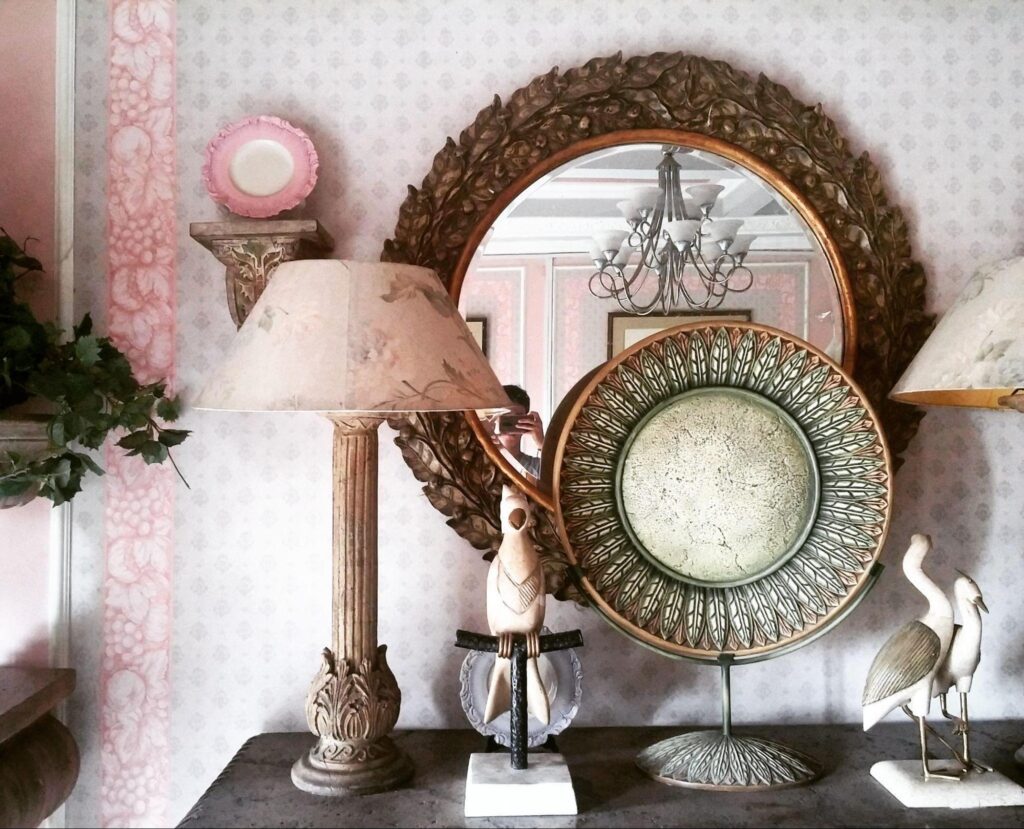
For beginning maximalists, analogous color schemes (colors adjacent to the color wheel) often prove most manageable. These naturally harmonious relationships allow for variety while maintaining inherent color compatibility. More advanced practitioners might explore complementary or triadic schemes, but always with clear intention rather than random combination.
This color discipline provides the crucial foundation that allows maximalist spaces to feel designed rather than accidental. When adding new elements, consciously evaluate how they relate to your established palette before incorporating them into your space.
Layer Patterns With Purpose
Pattern mixing defines maximalism, but successful execution requires strategy. The key lies in varying scale while maintaining some connecting elements across different patterns.
The most approachable formula combines three pattern scales: large, medium, and small. A large-scale floral might pair with medium-scale stripes and small-scale dots, creating visual rhythm through their different proportions. This scale variation prevents patterns from competing directly with each other for attention.
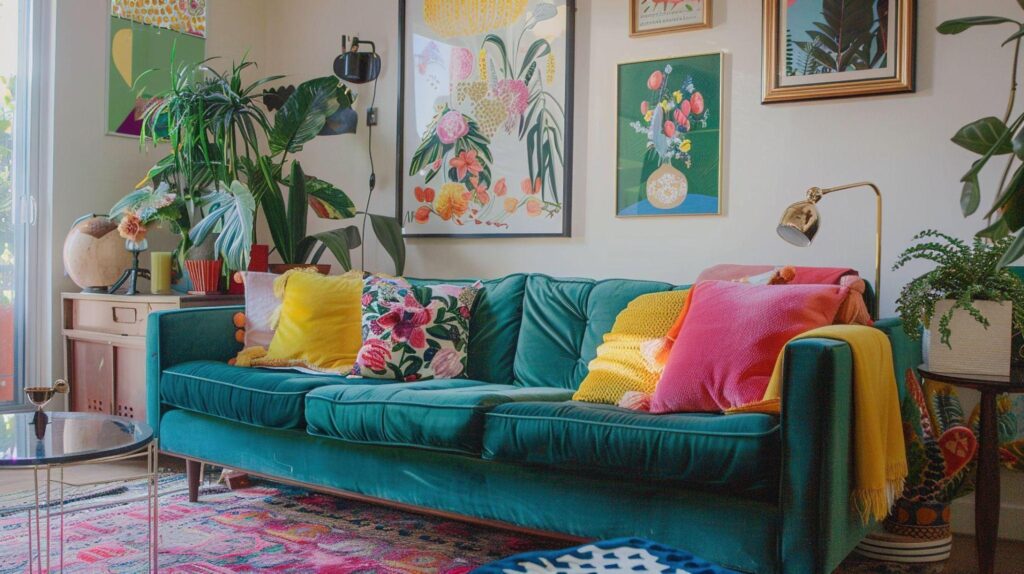
Beyond scale, consider pattern type. Combining different pattern categories—florals with geometrics, and abstracts with figurative designs—creates more interesting conversation than similar patterns at different scales. The contrast between structured geometrics and flowing organic patterns creates particularly effective tension.
For cohesive results, ensure patterns share at least one color from your core palette. This connection allows diverse patterns to relate to each other despite their differences. When patterns share color relationships, they avoid the disjointed feeling that makes unsuccessful maximalist attempts feel random rather than curated.
Create Focal Point Hierarchies
Successful maximalist spaces guide the eye through intentional focal point hierarchies rather than creating a visual cacophony. Without this organization, spaces quickly become overwhelming rather than engaging.
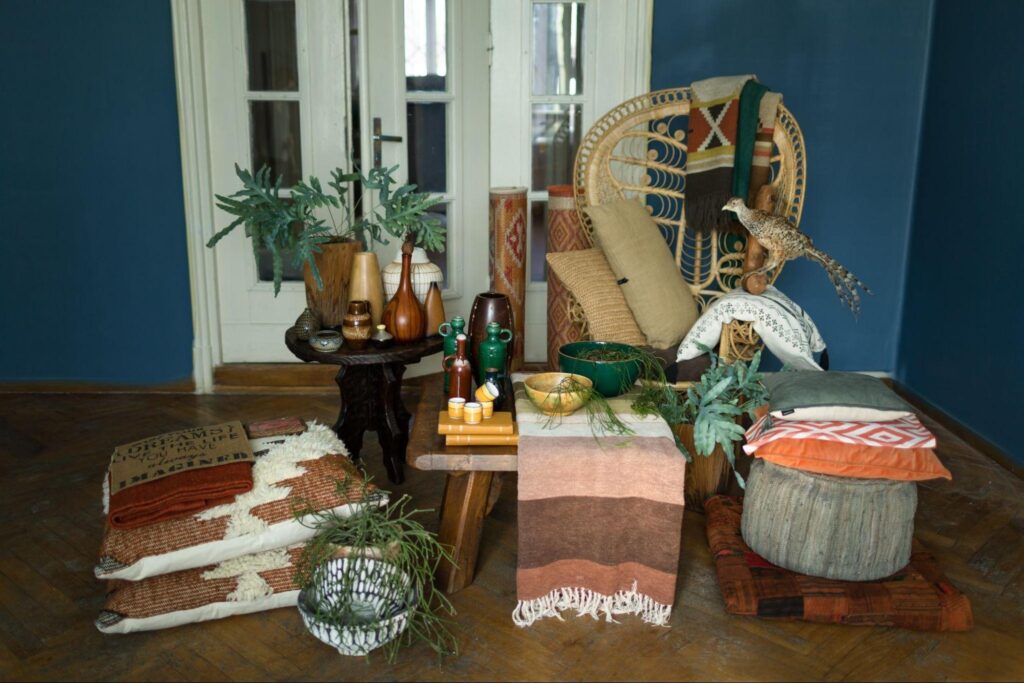
Each room needs a clear primary focal point—perhaps a dramatic headboard, statement art piece, or distinctive furniture item. This anchor provides the visual starting point from which other elements radiate. Secondary focal points complement rather than compete with this primary element, creating a visual journey rather than confusion.
The areas between focal points require relative visual calm to prevent sensory overload. These transitional zones might feature more subtle patterns, solid colors from your palette, or textural interest rather than high-contrast elements. These breathing spaces provide crucial visual relief that makes the more dramatic moments more effective.
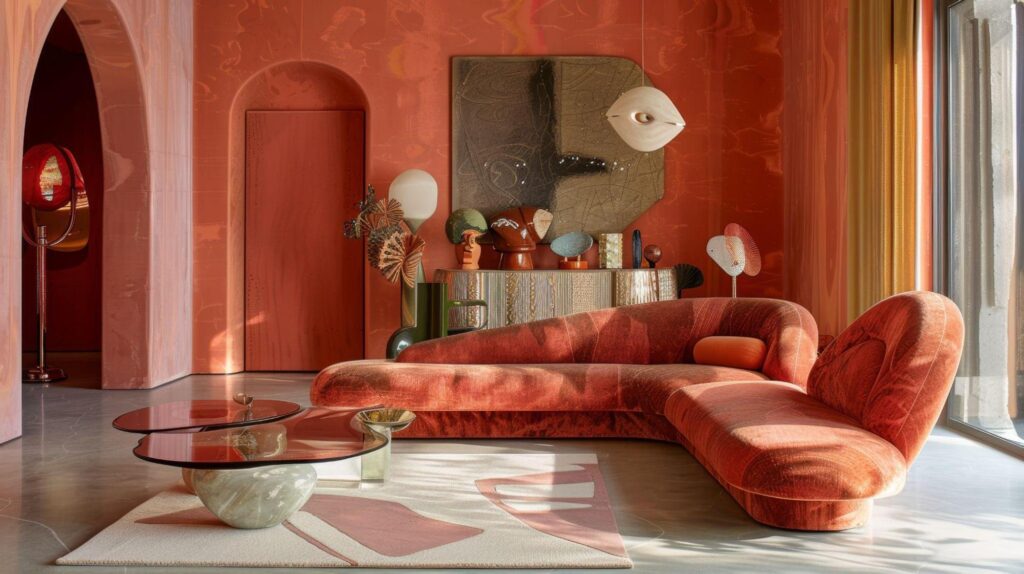
Remember that negative space remains important even in maximalist design. Rather than filling every surface, strategic emptiness creates necessary pauses that allow the eye to rest before engaging with the next point of interest. These intentional gaps prevent the cluttered feeling that gives maximalism its occasional bad reputation.
Build Through Thoughtful Layering
Maximalism at its best represents thoughtful accumulation rather than instant creation. The most successful examples develop through gradual layering that allows each addition to respond to the existing composition.
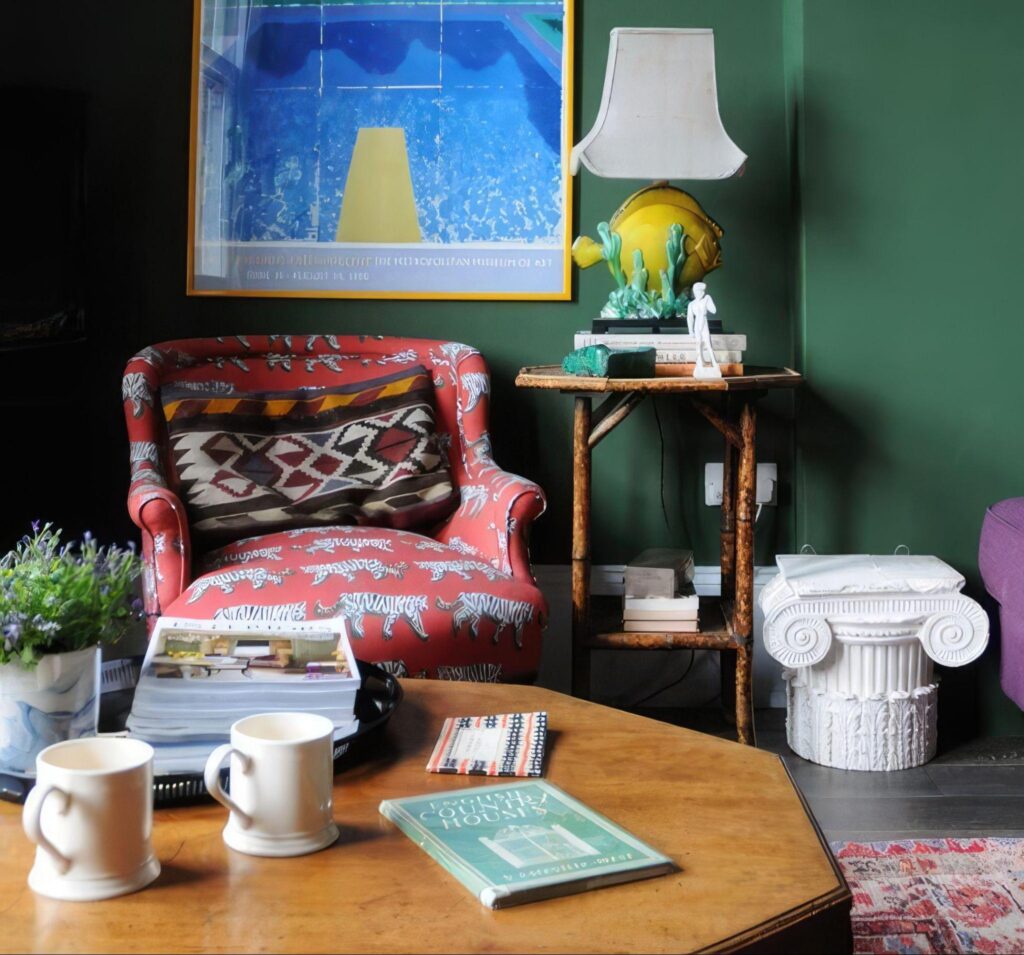
Begin with larger foundational elements—furniture, rugs, major art pieces—established in relation to your color palette. These foundation pieces should include some variation but maintain overall cohesion through color relationships and intentional style mixing.
Add the middle layer through textiles, smaller furniture pieces, and secondary art that introduces additional patterns and textures while maintaining a connection to your color story. This layer builds complexity while reinforcing the underlying structure established by foundation pieces.
Complete the composition with carefully considered accessories that add personality without overwhelming the space. These final elements provide the distinctive details and personal touches that differentiate thoughtful maximalism from generic abundance. Edit these smallest elements most critically, selecting only pieces that contribute meaningfully to the overall composition.
Balance Visual Weight and Distribution
Maximalist spaces require careful attention to how visual weight is distributed throughout the environment. Without this consideration, rooms quickly become bottom-heavy, top-heavy, or imbalanced in ways that create subconscious discomfort.
Consider how color, pattern, and form create visual density in different areas of your space. Darker colors and busier patterns carry more visual weight than lighter, simpler elements. Balance these heavier elements with lighter counterpoints to prevent any zone from feeling disproportionately dense.
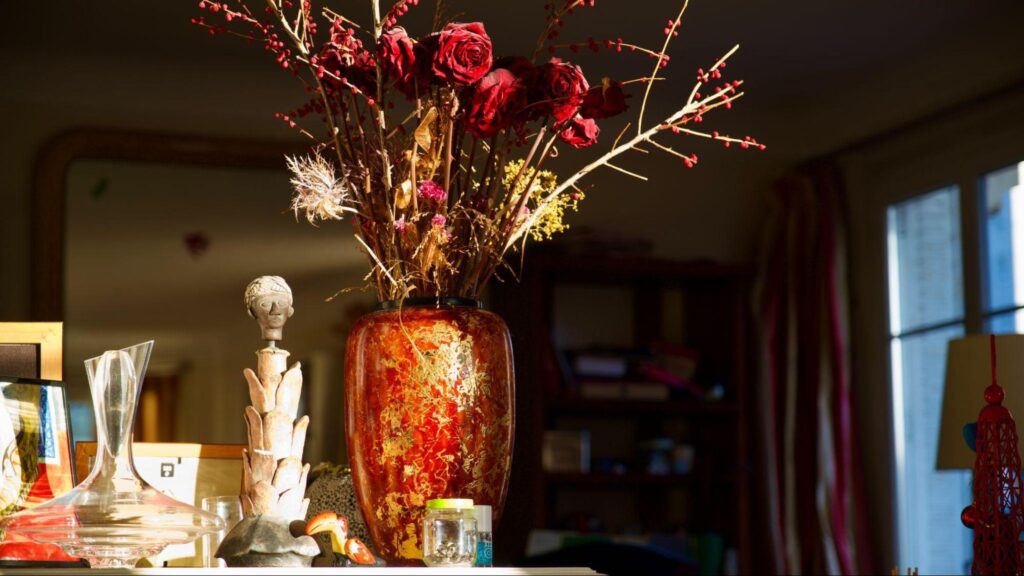
Distribute your most dramatic elements throughout the space rather than concentrating them in a single area. This dispersion creates more harmonious energy while ensuring the entire environment participates in the maximalist expression rather than isolating it to specific zones.
The vertical dimension deserves particular attention. Successful maximalist spaces engage the full height of rooms rather than concentrating visual interest at eye level. Consider how walls, ceilings, and the space between furniture and ceiling contribute to the overall composition, using these often-neglected areas to complete your three-dimensional expression.
Maintain Material Harmony
While maximalism celebrates variety, some consistency in materials provides necessary continuity. Without this material relationship, spaces can feel disjointed despite color coordination.
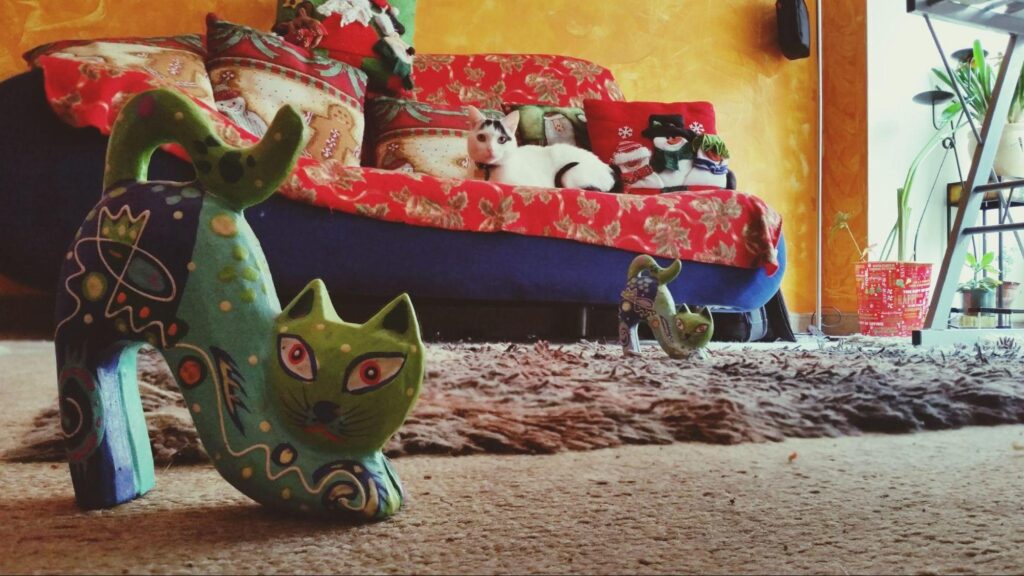
Identify 2-3 primary materials that will appear regularly throughout your space. These might include specific wood tones, metal finishes, or distinctive textiles that recur in different applications. These material constants provide subtle connection points that help diverse elements feel related.
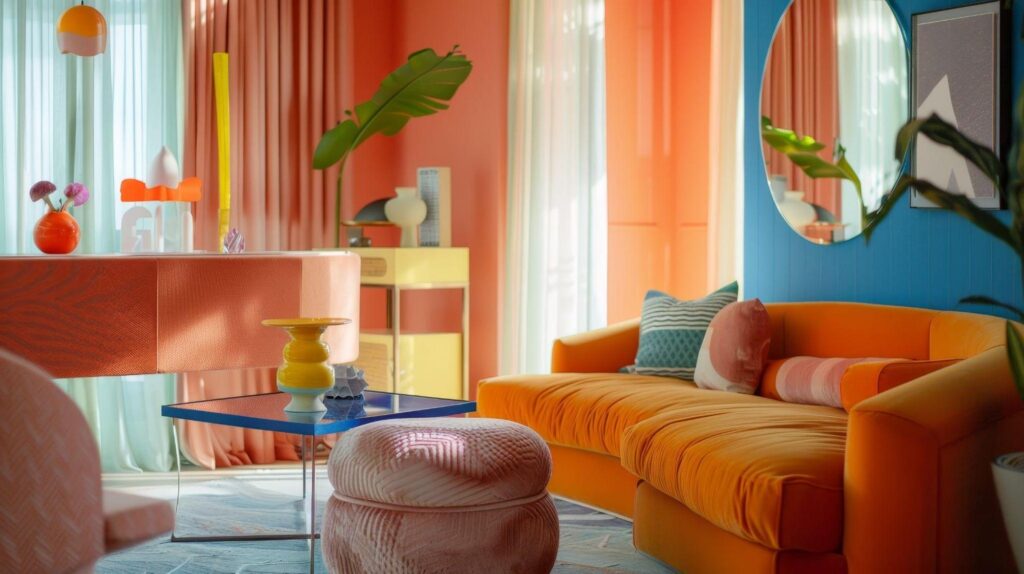
When introducing statement pieces in distinctive materials, ensure they relate to your overall composition through color, form, or function rather than existing as isolated moments. These unique elements should feel like intentional counterpoints within an established material conversation rather than random interruptions.
Consider how different materials interact with light throughout the day. Materials with reflective qualities—glass, polished metals, glazed ceramics—create different effects than matte or textural surfaces. This variation in light interaction adds another dimension to your layered composition, creating spaces that transform throughout the day.
The most successful maximalist interiors balance exuberant self-expression with thoughtful restraint, creating environments that feel personally meaningful without overwhelming daily life. By establishing clear organizing principles through color, pattern relationships, and intentional hierarchies, you can create maximalist spaces that energize rather than exhaust—spaces that express personality while maintaining the underlying order that makes them livable.

Hi, I’m Christian, a 43-year-old father of two and a lifelong DIY enthusiast. My workshop is where I spend countless hours experimenting, upgrading, and fine-tuning. Sharing my experiences and practical advice is my way of helping others create homes they love.



